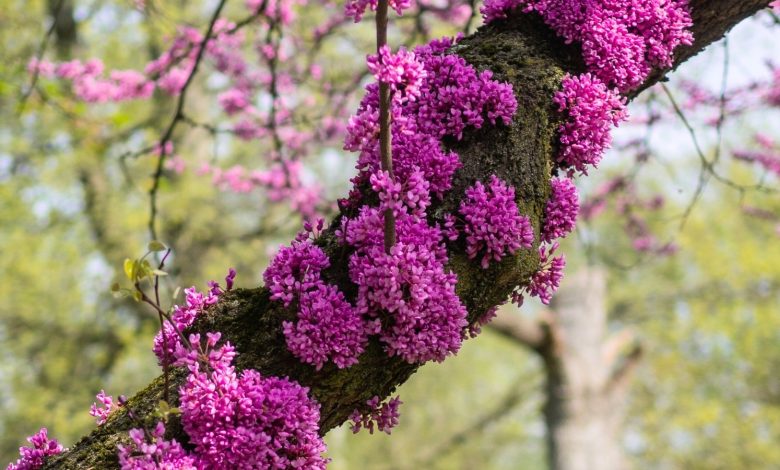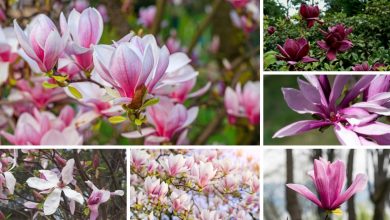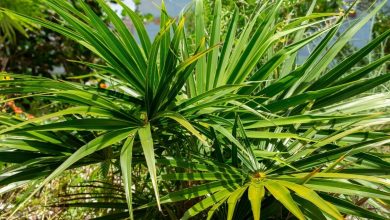Discover 17 Alternatives to Plant Instead of Bradford Pears

Are you looking for an alternative to the Bradford Pear tree? The Bradford Pear is a popular tree, but it has become invasive in some areas and can cause damage to the environment. Fortunately, there are a variety of other trees that can provide the same benefits as the Bradford Pear without the potential for environmental damage. Discover 17 Alternatives to Plant Instead of Bradford Pears is a comprehensive guide to help you find the perfect tree for your landscape. This guide provides information on a variety of trees, including their size, growth rate, and characteristics, so you can make an informed decision about which tree is best for your yard. With this guide, you can find the perfect tree to add beauty and value to your landscape without the worry of environmental damage.
Benefits of Planting Alternatives to Bradford Pears
Planting alternatives to Bradford Pears is a great way to diversify your landscape and add some unique beauty to your outdoor space. Bradford Pears, while popular, are known for their invasive nature and can quickly take over an area. Planting alternatives can help you avoid this problem while still providing a stunning visual display.
One of the main benefits of planting alternatives to Bradford Pears is that they are generally more resistant to disease and pests. Bradford Pears are susceptible to fire blight, a bacterial disease that can quickly kill the tree. Alternatives, such as serviceberry, are much more resistant to this and other diseases. They are also less likely to be affected by pests, such as aphids and borers, which can quickly damage or kill Bradford Pears.
Another benefit of planting alternatives to Bradford Pears is that they are often more attractive. Bradford Pears have a very uniform shape and are often planted in rows, which can be boring. Alternatives, such as serviceberry, have a more natural shape and can be planted in a variety of ways to create a more interesting landscape.
Finally, planting alternatives to Bradford Pears can help you create a more sustainable landscape. Bradford Pears are known for their invasive nature and can quickly take over an area. Alternatives, such as serviceberry, are much less likely to spread and can help you create a more balanced landscape.
Overall, planting alternatives to Bradford Pears can be a great way to add some unique beauty to your outdoor space while avoiding the problems associated with Bradford Pears. They are generally more resistant to disease and pests, more attractive, and can help you create a more sustainable landscape.
Common Alternatives to Bradford Pears
Common alternatives to Bradford Pears are a great way to add a touch of beauty to your landscape without the risk of an invasive species. The Bradford Pear is a popular ornamental tree that is often used in landscaping due to its attractive white flowers and dense foliage. Unfortunately, the Bradford Pear is an invasive species, meaning it can spread quickly and outcompete native species.
Fortunately, there are many other ornamental trees that can provide the same aesthetic appeal without the risk of becoming invasive. Some of the most popular alternatives to Bradford Pears include the Japanese Tree Lilac, the Chinese Fringe Tree, and the American Hornbeam.
The Japanese Tree Lilac is a large, deciduous tree that produces fragrant white flowers in the spring. It is an excellent choice for those looking for a tree with a long flowering period and attractive foliage. The Chinese Fringe Tree is a small, deciduous tree that produces fragrant white flowers in the spring and yellow-green foliage in the summer. is a great choice for looking for a smaller tree with an attractive shape and a long flowering period. The American Hornbeam is a medium-sized, deciduous tree that produces yellow-green foliage in the summer and attractive yellow-orange foliage in the fall. It is a great choice for those looking for a tree with an attractive shape and an interesting bark texture.
All of these trees are excellent alternatives to the Bradford Pear, and they can provide the same aesthetic appeal without the risk of becoming invasive. With proper care and maintenance, these trees can provide years of beauty and enjoyment.
How to Plant Alternatives to Bradford Pears
If you’re looking for a beautiful flowering tree to add to your landscape, but don’t want to plant a Bradford Pear, there are plenty of alternatives to choose from. Bradford Pears have become popular due to their beautiful white flowers and attractive shape, but they are prone to splitting and can be invasive. Fortunately, there are many other trees that can provide the same beauty and benefits without the drawbacks.
One great alternative to Bradford Pears is the Serviceberry tree. Serviceberry trees are native to North America and have a rounded, spreading form. They produce clusters of white flowers in the spring and small, edible fruits in the summer. The fruits are sweet and can be used in jams and pies. Serviceberry trees also have beautiful, reddish-purple foliage in the fall.
Another option is the Redbud tree. Redbud trees are native to the eastern United States and have a spreading, vase-shaped form. They produce clusters of pink flowers in the spring and have heart-shaped leaves that turn yellow in the fall. Redbud trees are also drought-tolerant and can tolerate a wide range of soil conditions.
If you’re looking for a flowering tree with a more upright form, you may want to consider the Dogwood tree. Dogwood trees are native to North America and have a pyramidal shape. They produce clusters of white or pink flowers in the spring and have glossy, dark green foliage in the summer. Dogwood trees are also drought-tolerant and can tolerate a wide range of soil conditions.
Finally, if you’re looking for a flowering tree with a more upright form, you may want to consider the Japanese Tree Lilac. Japanese Tree Lilacs are native to Japan and have a pyramidal shape. They produce clusters of white flowers in the spring and have glossy, dark green foliage in the summer. Japanese Tree Lilacs are also drought-tolerant and can tolerate a wide range of soil conditions.
No matter which tree you choose, it’s important to research the tree before planting it. Make sure the tree is suited to your climate and soil conditions, and be sure to follow all planting instructions. With a little research and care, you can find the perfect alternative to the Bradford Pear and enjoy its beauty for years to come.
Challenges of Planting Alternatives to Bradford Pears
The Bradford Pear is a fast-growing tree with a beautiful, symmetrical shape and white flowers in the spring. It is also highly tolerant of urban environments, making it a popular choice for landscaping. However, it is an invasive species that has caused ecological damage in many areas. The trees spread quickly and can crowd out native species, disrupting the natural balance of the environment.
Finding alternatives to the Bradford Pear is a challenge, as it requires finding trees that have similar characteristics, but that are not invasive. The most important thing to consider is the tree’s invasiveness. Trees that are native to the area are usually the best choice, as they are adapted to the local environment and are less likely to become invasive. Additionally, it is important to consider the tree’s growth rate, size, and shape, as well as its resistance to pests and diseases.
Some of the most popular alternatives to the Bradford Pear include the Redbud, Dogwood, and Magnolia trees. These trees are all native to the United States and have similar characteristics to the Bradford Pear, such as a symmetrical shape and white flowers in the spring. Additionally, they are not considered invasive species and are less likely to cause environmental damage.
When planting alternatives to the Bradford Pear, it is important to consider the tree’s invasiveness and its growth rate, size, and shape. Additionally, it is important to choose trees that are native to the area, as they are adapted to the local environment and are less likely to become invasive. By choosing the right trees, it is possible to create a beautiful landscape without causing environmental damage.
Advantages of Planting Alternatives to Bradford Pears
Planting alternatives to Bradford Pears is a great way to improve the look and health of your landscape. Bradford Pears are an invasive species that can spread quickly and take over an area, crowding out native plants and wildlife. Planting alternatives can help to prevent this from happening, as well as providing a variety of other benefits.
One of the biggest advantages of planting alternatives to Bradford Pears is that they are often more aesthetically pleasing. Bradford Pears have a very uniform look, with their rounded shape and symmetrical branches. Alternatives such as Japanese Maples, Dogwoods, and Redbuds can provide a much more varied and interesting look to your landscape. They can also provide more color and texture, with their unique foliage and blooms.
In addition to their aesthetic benefits, planting alternatives to Bradford Pears can also help to improve the health of your landscape. Alternatives such as Redbuds and Dogwoods are native to the area, and are much better suited to the local climate and soil conditions. They are also much less likely to spread and become invasive, which can help to protect the local ecosystem.
Finally, planting alternatives to Bradford Pears can also help to attract wildlife to your landscape. Native plants provide food and shelter for birds, butterflies, and other beneficial insects. This can help to create a more vibrant and diverse ecosystem in your yard, which can be both beautiful and beneficial.
Overall, planting alternatives to Bradford Pears can provide a variety of benefits for your landscape. They can provide a more interesting and aesthetically pleasing look, help to improve the health of your landscape, and attract beneficial wildlife. So if you’re looking to improve the look and health of your landscape, consider planting alternatives to Bradford Pears.
In conclusion, if you are looking for an alternative to Bradford Pears, there are plenty of options to choose from. From flowering trees to evergreen shrubs, there are a variety of plants that can provide the same aesthetic appeal and benefits as Bradford Pears. With careful consideration of the size of the space, soil conditions, and desired characteristics, you can find the perfect alternative to Bradford Pears.
Excerpt
Bradford Pears are a popular tree choice, but they are prone to disease and can become invasive. Instead, consider planting one of the 17 alternatives, such as Redbud, Dogwood, or Crape Myrtle, which are all hardy and disease-resistant.



